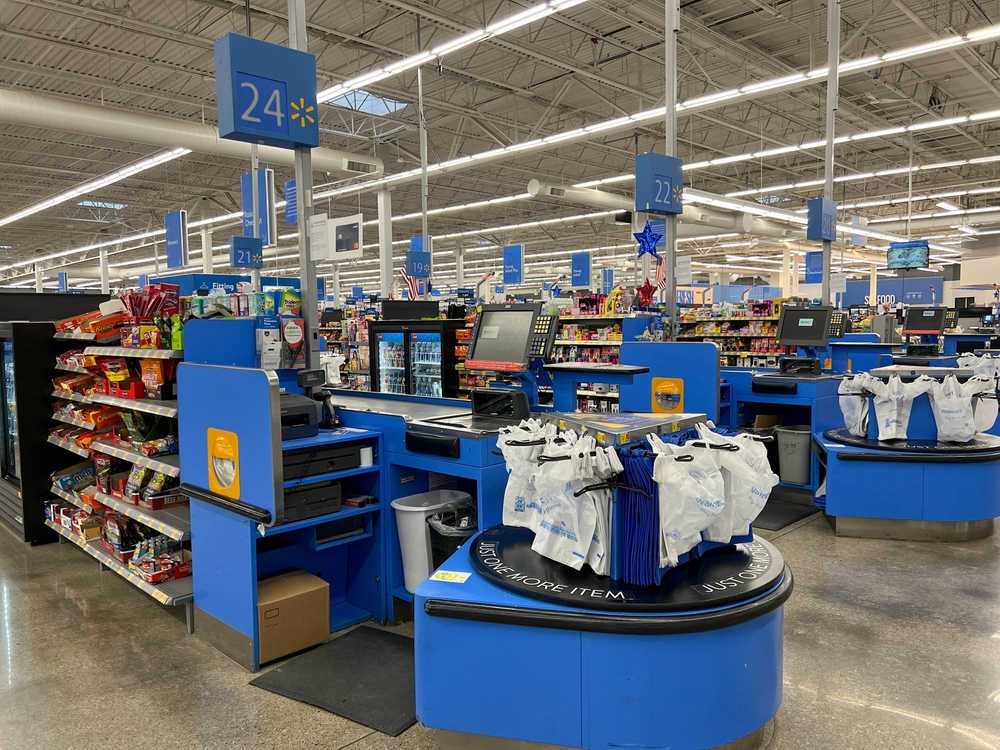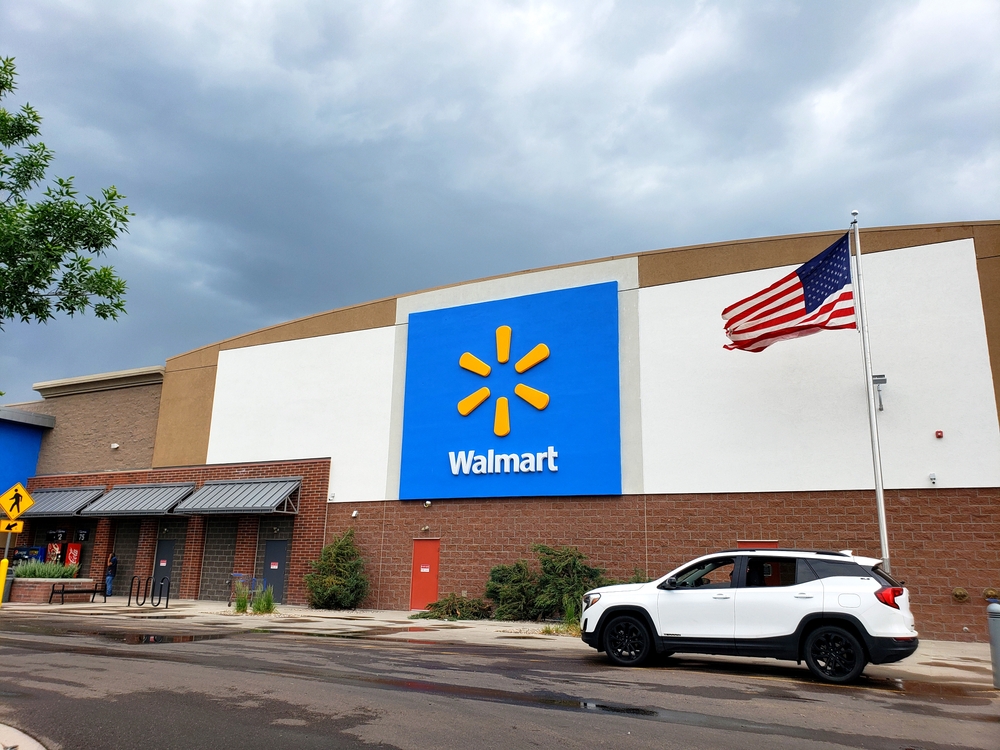News
Walmart Shoppers May Soon Have to Pay a Fee to Use Self-Checkout

In an age where technology continues to reshape our daily lives, the retail world has embraced self-checkout systems as a symbol of convenience and efficiency. These systems, once celebrated for their ability to bypass traditional cashier lines, now stand at the center of a new conversation. Major retailers like Walmart are considering changes that may alter the accessibility of these self-checkout lanes, with discussions around potential fees or membership restrictions gaining traction.
This shift has sparked mixed reactions among shoppers and industry experts alike. While some see it as a natural evolution in retail strategy, others fear it could create barriers for everyday consumers. As this debate unfolds, it becomes clear that the future of self-checkout may reflect broader trends in balancing technological convenience with customer inclusivity.

The Rise and Evolution of Self-Checkout Technology
Self-checkout systems have become a cornerstone of modern retail, revolutionizing the shopping experience by offering customers the autonomy to scan and bag their items without assistance. Introduced to reduce wait times and improve customer satisfaction, these systems have quickly spread across major retailers worldwide. For many, the appeal lies in the control and speed it offers, turning a once tedious part of shopping into a streamlined process. Retailers, too, benefit from these innovations, allowing them to focus on reducing labor costs while maintaining efficiency.
However, the landscape of self-checkout is evolving. Retail giants like Walmart and Target are now considering new ways to enhance this technology further, hinting at potential fees or restrictions for access. This could be an attempt to manage the growing demand for self-checkout lanes, particularly during busy hours when these lanes are packed. Retailers are exploring models that cater to specific customer segments, such as loyalty program members or delivery drivers, offering them exclusive access to these lanes as an added perk. The move may signify a shift from viewing self-checkout as a universal convenience to positioning it as a premium service.
This trend reflects a larger transformation in retail, where technology is not just a tool for convenience but also a way to create personalized shopping experiences. By limiting access to certain customers, retailers can test the waters on how exclusive services impact customer behavior and brand loyalty. Yet, the question remains: Will this boost efficiency, or will it drive away customers who have come to rely on the accessibility of self-checkout?
The Debate Over Fees: Convenience or Exclusion?
As news of Walmart’s potential plans to charge fees for self-checkout access spreads, consumers are beginning to take sides in this growing debate. On one hand, many customers value the speed and convenience that self-checkout lanes provide, often choosing them over traditional cashier lines to save time. For these shoppers, the idea of paying for something that once seemed free might feel like a reasonable trade-off, particularly if the fees come with additional benefits, such as quicker transactions or fewer queues.
However, there’s another camp of shoppers who see this development as a step toward exclusion. Many consumers rely on self-checkout not just for speed, but for the independence it grants them. Introducing fees could alienate a segment of the population who are unwilling or unable to pay extra for a service that has become a standard expectation in retail. For low-income shoppers or those on tight budgets, such a fee might create an unnecessary barrier, leaving them to face longer lines or inconvenient shopping experiences.
What complicates the situation further is the question of fairness. While exclusive services for paying members might work for loyalty programs, applying the same model to self-checkout could feel like a step backward for inclusivity. The debate highlights the ongoing struggle retailers face in balancing innovation and efficiency with keeping their customer base satisfied.

Exclusive Access and Membership Programs in Retail
Walmart’s potential decision to link self-checkout access to membership programs reflects a broader trend in retail where exclusivity is used to enhance customer loyalty. For members, having exclusive access to faster lanes or special services can make shopping feel more rewarding and personal. Membership programs have long been used to offer perks, such as discounts or early access to sales, and expanding these benefits to include premium checkout options could be seen as a natural progression.
From a business perspective, this strategy presents several advantages. By introducing self-checkout fees or restricting access to certain customer segments, retailers can encourage shoppers to enroll in their loyalty programs, boosting membership numbers. The added revenue stream from membership fees also helps to offset costs associated with maintaining and upgrading self-checkout technology. Retailers could also bundle self-checkout access with other services, such as faster delivery options or personalized shopping recommendations, making the membership more valuable in the eyes of customers.
But this model is not without its challenges. While it offers a new way to engage with loyal customers, it risks creating a divide between those who can afford premium services and those who cannot. Retailers will need to tread carefully to avoid alienating a portion of their customer base while promoting exclusivity. Striking the right balance between innovation and inclusivity will be crucial as these programs evolve.
How Technological Advancements Are Reshaping Retail
The integration of advanced technologies in retail has transformed nearly every aspect of the shopping experience, and self-checkout is just one part of this broader digital revolution. Retailers are increasingly using AI, machine learning, and data analytics to refine the efficiency and user-friendliness of their operations. For instance, self-checkout systems are becoming smarter, with improved accuracy in detecting items and reducing errors like scanning issues or false alarms that frustrate customers.
Beyond self-checkout, other technologies like augmented reality (AR) and virtual reality (VR) are reshaping how people shop. These innovations allow customers to try on clothes virtually or visualize how furniture will look in their homes, bridging the gap between online and in-store experiences. Mobile apps are also making shopping more convenient, with personalized recommendations and seamless checkout processes that aim to reduce the friction often associated with traditional shopping. Retailers are focused on creating an experience that’s fast, personal, and, above all, convenient.
Yet, with these advancements come concerns about privacy and data security. As retailers gather more data on shopping habits, consumers may become wary of how their personal information is being used. This presents a challenge for the industry: to innovate while building trust with customers by protecting their data and being transparent about how it is used. The future of retail will undoubtedly be driven by technology, but it will require careful navigation to maintain customer loyalty and ensure ethical practices.
The Role of Customer Feedback in Shaping Retail Policies
One of the most critical elements in successfully implementing new retail strategies is listening to customer feedback. As retailers like Walmart consider introducing fees for self-checkout access, they must be attuned to how their customer base reacts to these changes. Customers, after all, are the ones who ultimately determine the success or failure of such policies. By actively seeking and addressing feedback, retailers can fine-tune their approach to ensure it meets the needs and expectations of shoppers.
Feedback channels, whether through social media, surveys, or in-store conversations, offer valuable insights into customer sentiment. When Walmart experimented with closing self-checkout lanes or restricting their use in some stores, it was clear that customers had strong opinions. Some applauded the efforts to reduce shoplifting and streamline operations, while others expressed frustration at the loss of convenience. The lesson here is simple: transparency and communication are key when making changes that impact the shopping experience.
By staying responsive to customer concerns, retailers can mitigate backlash and even use feedback to drive improvements. Whether it’s adjusting the pricing structure for self-checkout fees or offering alternative solutions, being flexible and open to change will help retailers navigate the complexities of modern retail while maintaining strong customer relationships.
Balancing Innovation and Inclusivity: A Delicate Challenge
As technology continues to transform retail, the industry faces a delicate balancing act. On the one hand, innovation drives efficiency, speed, and convenience, making shopping easier and more enjoyable. On the other hand, these advancements risk alienating certain customer groups if they are not implemented thoughtfully. The introduction of fees for self-checkout is just one example of how innovation can create friction when not balanced with inclusivity.
Retailers must consider the diverse needs of their customer base, ensuring that technological advancements do not inadvertently exclude anyone. For instance, customers with disabilities may rely on self-checkout for its ease of use, while low-income shoppers may not be able to afford additional fees. Retailers need to find ways to make these services accessible to all while still leveraging technology to enhance the overall shopping experience.
Inclusivity doesn’t have to come at the expense of innovation. By offering different tiers of service or providing options for customers who prefer traditional checkout methods, retailers can cater to a wide range of needs. The future of retail depends on finding this balance—ensuring that technological advancements benefit everyone, not just those who can afford premium services.
The Future of Shopping: Innovation Meets Inclusivity
The potential introduction of fees for self-checkout services marks a pivotal moment in retail, signaling a shift toward more personalized and exclusive shopping experiences. While technological advancements have made shopping more convenient and efficient, retailers must tread carefully to ensure that innovations like fee-based self-checkout don’t exclude a significant portion of their customer base. Balancing premium services with accessibility will be key to maintaining customer loyalty and satisfaction in the long run.
As retailers continue to evolve, customer feedback will play an essential role in shaping the policies that define the future of shopping. By listening to their customers’ concerns and adapting their strategies accordingly, retailers like Walmart can create an inclusive environment where convenience is available to all, not just those willing to pay extra. Inclusivity and innovation need not be mutually exclusive; with thoughtful implementation, both can thrive.
Ultimately, the success of fee-based self-checkout systems will depend on how well retailers manage this balance. The challenge lies in integrating cutting-edge technology without compromising the customer experience. As the retail landscape continues to evolve, those who prioritize both innovation and inclusivity will lead the way in creating a dynamic and welcoming shopping experience for all.
Typos, corrections and/or news tips? Email us at Contact@TheMindUnleashed.com
